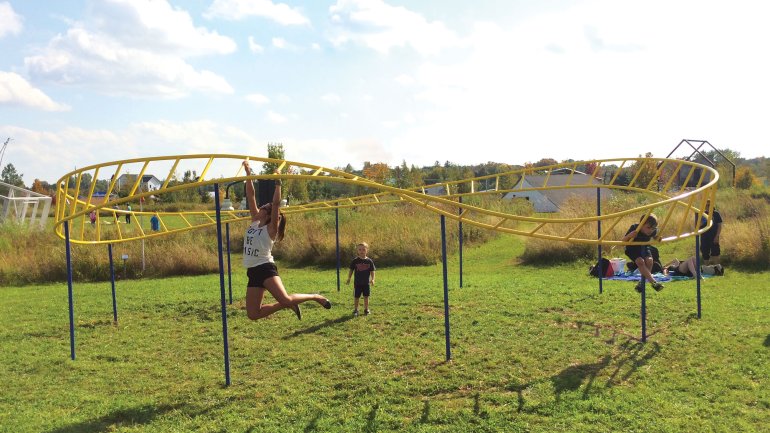In the Clouds, Down to Earth
In the Clouds, Down to Earth
I’m one of those people with a rich inner life, and my imaginings can be distracting. I’m aware of this every time I drive the wrong way down a one-way street.
It takes me years to learn to navigate a new city, which was a problem when I lived in seven cities in 15 years. When some nice stranger would venture to give me directions – “You know the big purple building shaped like an ice cream cone with the flashing red lights?” – all they’d get back was a blank stare. Buildings? Sidewalks? Signs? I have to concentrate to see them.
As an abstract, rather than a concrete, thinker, I’m agog at the artists in this issue, devoted to public art and play. Most of them are keenly aware of the spaces they visit and inhabit. No detail goes unnoticed. Take Drew Leshko, a paper sculptor in Philadelphia. In recent years, he’s been documenting his changing Fishtown neighborhood in miniature, replicating the makeshift renovations done in a hodgepodge of materials, down to the cigarette sign in the window of the corner store. It’s his form of historic preservation in a place that’s in transition.
Then there’s Kentucky native Risa Puno, who grew up loving art and science in equal measure. Now a New Yorker, she constructs all kinds of large-scale games for the public to play. She has to figure out the principles of each game or structure, accounting for the many variables that members of the public might bring – an abstract exercise. Then she’s got to build the components of each game – a nitty-gritty, concrete endeavor if ever there were one. Occasionally, even her well-developed brain hits a wall, as when she was figuring out Infinite Play, a set of monkey bars twisted into a Möbius strip (a concept some of us can barely grasp). “That was the first time I proposed something that I honestly wasn’t sure I would be able to build,” Puno told writer Diane Daniel. She was using complex calculations and unfamiliar materials. No worries; she managed.
Even Patrick Dougherty, a longtime “stick sculpture artist” based in North Carolina, has to be ingenious in both abstract and concrete terms. Yes, the environmental structures he builds look fanciful – they are oversize canisters, jugs, faces, castles, and creatures. But putting them together, as Dougherty has done for the past 30 years, is always a feat of ad hoc engineering. He has to scour the landscape for the saplings that are his raw materials, calculate how to get them to stand in systematic, animated bundles, and then teach the volunteers who’ve arrived to help. He deals in illusions, he says, but they are illusions he makes compellingly believable.
What these supremely observant people make plain: Some of us should not perform surgery, engineer complex buildings, or make certain kinds of art. Because some of us are more attuned to the physical world than others. And that’s a beautiful thing.
In this issue, you’ll find the third poster in our series of nine, marking 75 years of American craft history. We hope you enjoy it.




